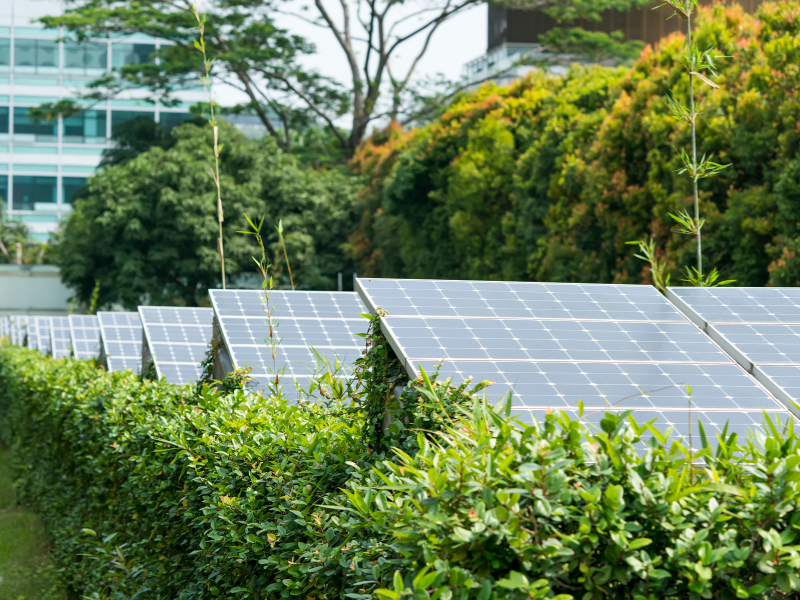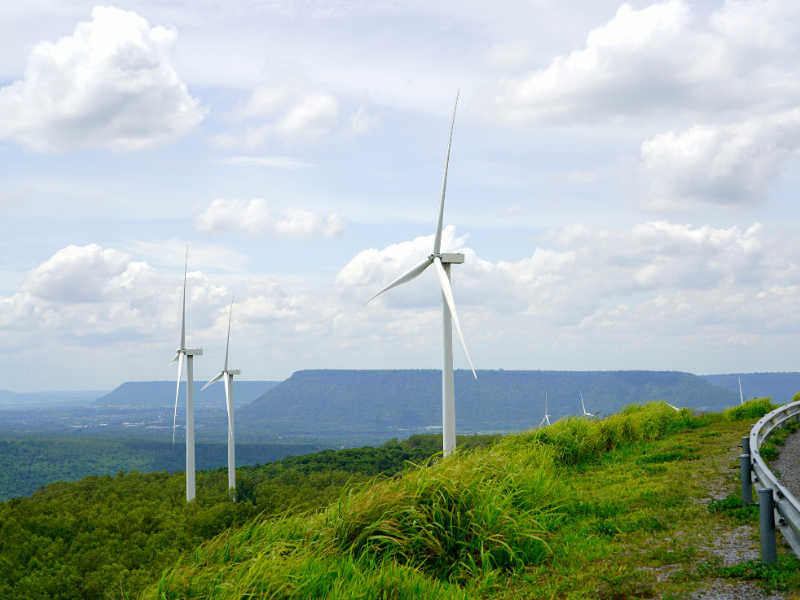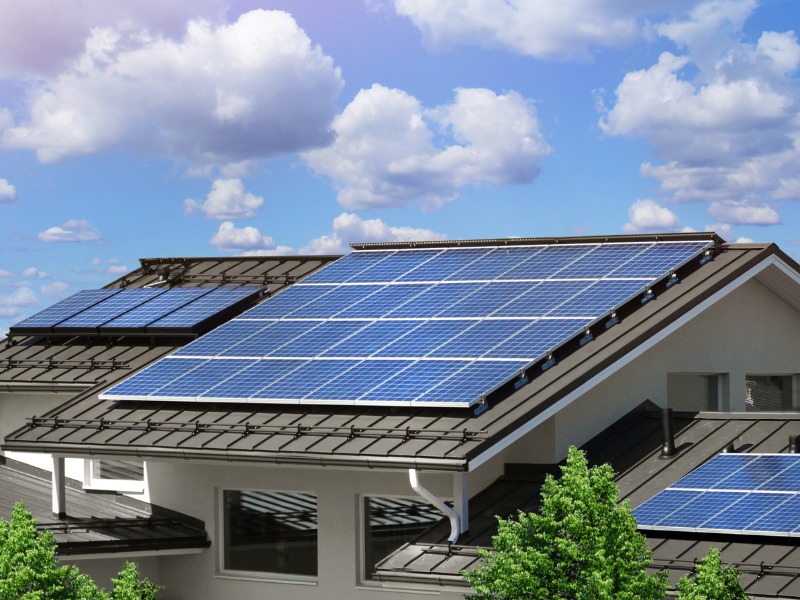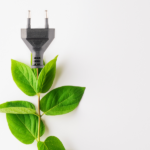In today’s world, the need for sustainable and ecofriendly power solutions has never been more crucial. As we continue to grapple with the adverse effects of climate change and increasing energy demands, it is imperative to explore alternative energy sources that have proven advantages in promoting a cleaner and greener future.
Ecofriendly power, which encompasses various renewable and energy-efficient technologies, offers a multitude of benefits that go beyond just environmental conservation. This article delves into the proven advantages of ecofriendly power, highlighting its impact on the environment, economy, public health, and more.
The Importance of Ecofriendly Power

Ecofriendly power, also known as green or sustainable power, refers to energy sources that have minimal negative impact on the environment and are replenishable in nature. The modern world heavily relies on non-renewable energy sources such as fossil fuels, which not only contribute to air pollution and climate change but also deplete over time. Embracing ecofriendly power is essential to reduce our carbon footprint, ensure long-term energy security, and create a sustainable future for generations to come.
Reduced Environmental Impact
One of the key advantages of ecofriendly power is its significantly reduced environmental impact. Unlike traditional power sources, such as coal or natural gas, ecofriendly power sources emit little to no greenhouse gases during energy production. This helps mitigate climate change and reduces air pollution, resulting in cleaner air and a healthier environment for both humans and wildlife.
Renewable Energy Sources
Renewable energy sources, including solar, wind, hydro, and geothermal power, are the pillars of ecofriendly power. These sources harness energy from nature’s abundant resources and replenish automatically, making them a sustainable alternative to finite fossil fuels. Solar energy, for example, harnesses the power of the sun using photovoltaic cells and converts it into electricity, while wind power utilizes wind turbines to generate clean energy. These renewable sources not only provide a greener alternative but also offer long-term energy security.
Lower Carbon Emissions

The proven advantage of ecofriendly power lies in its ability to significantly reduce carbon emissions. Fossil fuel combustion releases carbon dioxide (CO2), a greenhouse gas that contributes to global warming. By shifting to renewable energy sources, we can mitigate this impact and work towards achieving a carbon-neutral society. Studies have shown that switching to ecofriendly power could result in a substantial reduction in CO2 emissions, helping combat climate change and its associated impacts.
Energy Efficiency
Another noteworthy advantage of ecofriendly power is its inherent energy efficiency. Ecofriendly technologies are designed to maximize energy output while minimizing energy input. For instance, LED lighting consumes significantly less energy than traditional incandescent bulbs, translating into lower electricity bills and reduced energy wastage. Energy-efficient appliances and smart home solutions further contribute to energy conservation, making ecofriendly power a cost-effective and sustainable choice for consumers.
Cost Savings
Contrary to popular belief, ecofriendly power can offer substantial cost savings in the long run. While the initial installation costs of renewable energy systems may be higher, the operational and maintenance expenses are often significantly lower than those of conventional power sources. Moreover, as renewable energy technologies advance and economies of scale are achieved, the overall costs continue to decrease. By investing in ecofriendly power, individuals and businesses can not only save on energy bills but also benefit from potential incentives and grants offered by governments and utilities.
Job Creation and Economic Growth

The transition towards ecofriendly power sources has the potential to create numerous job opportunities and spur economic growth. The renewable energy sector is a rapidly growing industry that requires a skilled workforce in various fields such as manufacturing, installation, and maintenance of solar panels, wind turbines, and other green technologies. According to the International Renewable Energy Agency (IRENA), the renewable energy sector employed over 11 million people worldwide in 2018, a number that is expected to continue rising. By investing in ecofriendly power, countries can stimulate local economies, reduce dependence on imported energy, and foster innovation and entrepreneurship in the green sector.
Energy Independence
The reliance on imported fossil fuels leaves many countries vulnerable to political and economic instability. Ecofriendly power, on the other hand, offers the potential for energy independence by utilizing domestically available resources. Countries rich in solar or wind energy can tap into these sustainable sources and reduce their dependence on fossil fuel imports. Not only does this enhance energy security, but it also fosters national resilience and lessens the impact of global energy market fluctuations.
Improved Public Health
The use of ecofriendly power has a direct positive impact on public health. Traditional power sources, particularly coal-fired power plants, emit pollutants such as sulfur dioxide, nitrogen oxide, and particulate matter, which have detrimental effects on human health. These pollutants are known to contribute to respiratory diseases, cardiovascular problems, and even premature deaths. By transitioning to ecofriendly power, we can reduce air pollution and improve public health outcomes, resulting in lower healthcare costs and a higher quality of life for communities.
Increased Resilience and Reliability

Ecofriendly power systems, especially those incorporating energy storage technologies, offer increased resilience and reliability in the face of natural disasters or grid failures. Unlike conventional power systems that heavily rely on centralized power plants and transmission lines, ecofriendly power solutions can be decentralized and distributed. This means that even if a certain area experiences a power outage, households or businesses with their own renewable energy systems and battery storage can continue to function. This enhanced resilience ensures uninterrupted power supply during emergencies and strengthens overall energy security.
Climate Change Mitigation
Mitigating climate change is one of the most urgent challenges humanity faces, and ecofriendly power plays a pivotal role in this endeavor. The Intergovernmental Panel on Climate Change (IPCC) has identified the urgent need to limit global warming to well below 2 degrees Celsius above pre-industrial levels. Achieving this requires a substantial reduction in greenhouse gas emissions, which can be facilitated by transitioning to renewable and sustainable energy sources. Ecofriendly power technologies are key enablers in reducing carbon emissions and combating climate change, providing a viable path towards a more sustainable future.
Government Incentives and Support
Governments across the world recognize the importance of ecofriendly power and offer various incentives and support mechanisms to promote its adoption. These incentives may include tax credits, grants, feed-in tariffs, net metering programs, and green energy certificates. By providing financial and policy support, governments encourage individuals, businesses, and communities to invest in renewable energy systems and energy-efficient practices. These favorable policies not only make ecofriendly power more accessible but also help accelerate the transition towards a greener and more resilient energy infrastructure.
Technological Advancements
The field of ecofriendly power is constantly evolving, driven by technological advancements and innovation. Researchers and engineers are continuously striving to enhance the performance, efficiency, and affordability of renewable energy systems. This progress has led to breakthroughs in energy storage solutions, such as advanced battery technologies, which facilitate the integration of intermittent renewable energy sources into the grid. Additionally, advancements in materials science and manufacturing techniques are enabling greater deployment of solar panels and wind turbines, further expanding the reach of ecofriendly power.
Case Studies: Success Stories
Real-world examples demonstrate the proven advantages of ecofriendly power in action. Numerous countries and communities have successfully embarked on the transition to sustainable energy sources and reaped significant benefits. For instance, Germany has become a global leader in renewable energy, with wind and solar power accounting for a significant portion of its electricity generation. The country’s Renewable Energy Sources Act, enacted in 2000, has been instrumental in promoting the adoption of ecofriendly power and creating jobs in the renewable energy sector. Similarly, Costa Rica has achieved nearly 100% renewable energy generation for several consecutive years, emphasizing its commitment to sustainability and attracting eco-tourism.
Common Misconceptions About Ecofriendly Power
While ecofriendly power offers numerous advantages, there are some common misconceptions that need to be addressed. These misconceptions often stem from outdated information or a lack of awareness about the latest advancements in renewable energy technologies. By dispelling these myths, individuals can make informed decisions and recognize the true value of ecofriendly power solutions.
FAQs About Ecofriendly Power
To provide more insight into the proven advantages of ecofriendly power, here are some frequently asked questions along with their answers.
Is ecofriendly power more expensive than traditional power sources?
Contrary to popular belief, ecofriendly power is becoming increasingly cost-competitive with traditional power sources. While the initial installation costs may be higher, the long-term savings in operational and maintenance expenses often offset the initial investment. Moreover, as technology advances and economies of scale are achieved, the costs of renewable energy systems continue to decrease. Additionally, governments and utilities often offer incentives, such as tax credits and grants, to make ecofriendly power more affordable and accessible.
Are there any disadvantages of ecofriendly power?
While ecofriendly power has numerous advantages, it is essential to acknowledge its limitations. One of the key challenges is the intermittent nature of certain renewable energy sources, such as solar and wind power. These sources rely on weather conditions and may not produce consistent energy output. However, advancements in energy storage technologies, such as batteries, are mitigating this issue by allowing excess energy to be stored for use during low production periods. Additionally, the initial installation costs of renewable energy systems can still be higher than those of traditional power sources, although this gap is rapidly closing.
How can I switch to ecofriendly power at home?
Switching to ecofriendly power at home is a relatively straightforward process. Here are some steps you can take:
- Conduct an energy audit: Assess your current energy consumption and identify areas where energy efficiency can be improved.
- Install energy-efficient appliances and lighting: Replace old appliances with Energy Star-rated devices, which consume less energy without compromising performance. Switch to LED lighting for significant energy savings.
- Consider solar panels: If feasible, install rooftop solar panels to generate your own renewable energy. Depending on your location and electricity consumption, solar panels can help reduce or even eliminate your electricity bills.
- Insulate your home: Proper insulation reduces heating and cooling energy requirements, leading to cost savings and improved comfort.
- Opt for ecofriendly transport: If possible, switch to electric vehicles or use public transportation, cycling, or walking to reduce your carbon footprint related to transportation.
What are the long-term benefits of investing in ecofriendly power?
Investing in ecofriendly power offers several long-term benefits, including:
- Reduced energy costs: Over time, ecofriendly power systems can lead to significant savings on energy bills.
- Increased property value: Homes and buildings equipped with renewable energy systems may have higher resale value.
- Energy independence: Generating your own renewable energy reduces dependence on external energy sources and provides resilience during power outages.
- Environmental conservation: By reducing carbon emissions and promoting sustainable practices, you contribute to a greener and healthier planet.
- Job creation: Supporting the renewable energy sector stimulates economic growth, creating new job opportunities in green industries.
Conclusion
Ecofriendly power provides a multitude of proven advantages that extend beyond just environmental conservation. From reduced environmental impact and lower carbon emissions to cost savings and job creation, embracing ecofriendly power is a win-win proposition for individuals, communities, and the planet. By harnessing renewable energy sources and implementing energy-efficient practices, we can pave the way for a sustainable and resilient future. Let us seize the benefits and opportunities offered by ecofriendly power to create a cleaner and greener world for generations to come.




